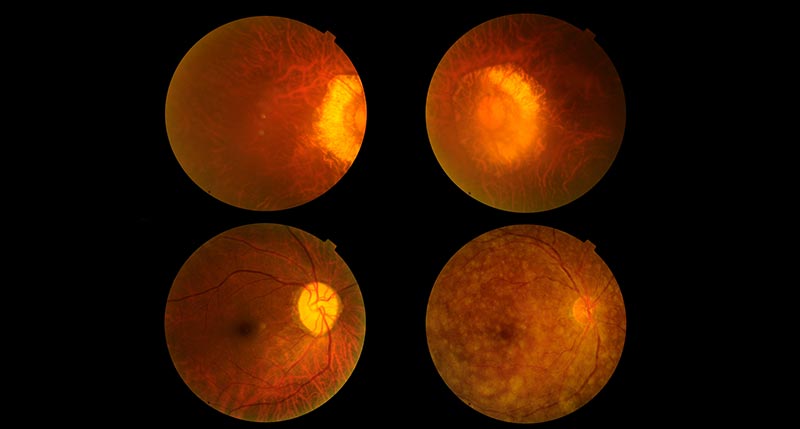What is Age-Related Macular Degeneration (AMD)?
Age-Related Macular Degeneration — called AMD for short — is an all-too-common eye disease that blurs central vision and can make it harder to drive, read, see faces or do “up-close” work. It is the most common cause of severe vision loss in people over 60. More than 200,000 cases of AMD are diagnosed yearly in the U.S., which translates to almost 20 million adults living with AMD. Globally, that number will rise to approximately 288 million by 2040.
There is no cure for AMD, which is a life-long complication once it develops. However, with early detection, the condition can often be treated and managed.
The aging process damages the retina of the eye, specifically the macula – the part of the eye that controls straight-ahead, central vision and the sharpness or fine details of everything you see. It doesn’t, however, affect peripheral vision. As an example, if you were a person with AMD looking at a clock, you could see the numbers on the face of the clock but not the hands. It rarely causes complete blindness, but it can severely diminish your quality of life.
In some individuals, AMD progresses rapidly, while in others, it can occur slowly over time. Some patients don’t notice the vision loss it causes at first, due to the slow progression. That’s why it’s so important to have an annual comprehensive dilated eye exam. Your eye doctor can watch for and detect vision changes and other early signs, such as the presence of drusen – tiny yellow deposits in the retina that may indicate the eye is at higher risk for developing more severe AMD. Macular degeneration may develop in only one eye or in both eyes, and the level of severity can differ in each eye. If you are diagnosed as being at risk for AMD, your optometrist will recommend a protocol to minimize and manage the vision loss associated with the condition.
What are the symptoms of AMD?
- Fuzzy or blurry vision
- Difficulty recognizing faces, reading fine print, and driving
- Blurry, dark or empty spots in the center of your vision
- Different (worse or less) color perception
- Visual distortions: straight lines that appear wavy
- Central vision that is reduced in one or both eyes
- Difficulty adapting to low levels of light
Who is at risk for AMD?
No one knows the precise cause of Age-Related Macular Degeneration, but research indicates that it may be a combination of family history, environmental, and lifestyle factors.
Here are some indicators and risk factors that may mean you are more likely to develop AMD:
- Risk for AMD increases as you age. People age 60 and older are more likely to have AMD, and women develop AMD at an earlier age than men.
- If you are Caucasian, you are at higher risk.
- If you are a smoker, that habit dramatically increases your risk of developing AMD.
- Having a family history of macular degeneration; researchers have identified several genes linked to AMD.
- Being overweight
- High blood pressure or hypertension
- Diabetes
- Poor nutrition; a diet high in saturated fats like meat, butter, and cheese
- Heart disease
- High cholesterol levels
- Accumulated UV light exposure over your lifetime
How can I prevent AMD?
You can take steps to lower your risk of developing AMD. Risk factors such as your age and family history are beyond your control, but your lifestyle, activity levels, and eating habits are all within your control!
Lifestyle factors to reduce your individual risk of developing AMD include:
- Maintain a healthy weight
- Stay physically active
- Eat eye-healthy foods like dark, leafy greens, yellow fruits and vegetables (kale, spinach, broccoli, and squash) – these foods are high in antioxidants and vitamins that reduce your risk of developing AMD. Choose fish like salmon and tuna, which are high in Omega-3 fatty acids, and snack on walnuts. Make it a habit to eat a balanced nutrient-rich diet. One good option? The Mediterranean Diet.
- Always wear UV protective glasses or sunglasses – 365 days a year.
- Schedule your annual eye exam. See your optometrist regularly for a comprehensive eye exam to look for early signs and symptoms of AMD. Early detection is the key to treating this disease and preventing or slowing the rate of vision loss.
If you are at high risk for developing AMD or other debilitating eye conditions, ask your eye doctor how often you should be examined to monitor your eyes for early signs. Your eyes are your window to the world. Be proactive with your visual health: Call us today to schedule your annual eye exam.





